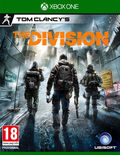You can trust VideoGamer. Our team of gaming experts spend hours testing and reviewing the latest games, to ensure you're reading the most comprehensive guide possible. Rest assured, all imagery and advice is unique and original. Check out how we test and review games here
Guns in The Division don’t just shoot stuff. Like, they obviously do mainly shoot stuff, but their interaction with your character stats, and how you’re playing your agent, alongside the shooting is far more complex. We’ve broken down the full list of weapon classes, weapon stats, and how weapon talents and modifications work, to make it easier to digest for you all.
Weapon Types in Tom Clancy’s The Division
In The Division you have six different categories for your weapons, which define the characteristics they have (in broad strokes). There are different guns within those categories, and you can also attach mods to them to fine tune them until you have exactly the gun you want.
The Assault Rifle in Tom Clancy’s The Division
The assault rifle is a standard kind of weapon in the Division. It’s got a large ammo capacity so you can sustain fire for a while, and is good at medium range as well as being effective up close. It’s the sort of gun that every shooter starts you off with, so it should be pretty familiar if you’ve played any before.
The LMG in Tom Clancy’s The Division
LMG stands for light machine gun, and as you can imagine from the words ‘machine gun’ it has a high rate of fire. It does also have a strong recoil as you start shooting, so that can surprise you if you’re not ready for it, but the LMG actually gains accuracy the longer you fire it to encourage you to use it for suppressing fire. It’s great for hustling enemies around and pushing them behind cover, so it’s a good support weapon.
The Marksman Rifle in Tom Clancy’s The Division
Marksman rifles have the greatest optimum range, but slower rates of fire, coming in bolt action or semi-automatic versions. They have high bonuses to headshot damage, and overall higher damage per shot than most other weapons (depending on how your loot drops go). Marksman rifles are The Division’s answer to sniper rifles.
The Pistol in Tom Clancy’s The Division
The pistol is your sidearm, and you probably won’t be using it that much, unless you’re playing as a tank and are using the Ballistic Shield skill a lot, because with that skill active the sidearm is the only weapon you can use. The good news is that the pistol has unlimited ammo, and there are different ones to choose between (a revolver, for example, will perform differently when compared to a semi-auto).
The Shotgun in Tom Clancy’s The Division
You’ve heard of these before, right? Shotguns are guns that fire shot, are hilariously inaccurate, and do massive amounts of damage at close range. For some lower level enemies a shotgun blast to the face does enough damage for an instant kill. However, shotguns also have a very long reload time and a short range, so they’re not usually best to use as a primary weapon.
The SMG in Tom Clancy’s The Division
Small machine guns have lower range, and are pretty inaccurate even at medium distance. This is traded in for a much smaller recoil than other guns, and a higher critical hit chance, so if you’re at closer range you can do some nice damage with one of these babies.That being said, given it’s harder to shrug off damage and healing is a much more tactical manoeuvre in The Division, especially early in the game, you’ll probably want to use the SMG as a secondary weapon rather than a primary one.
Weapon Stats in Tom Clancy’s The Division
Weapons in The Division have a total of seven base stats, many of which are self explanatory. They are as follows:
Accuracy – determines the accuracy of the weapon, and how quickly your aiming reticule loses focus.
Reload Speed – how long it takes to load a new clip.
Range – the maximum distance your gun is still effective at.
Stability – the recoil as you fire the gun (especially over extended periods).
DMG – the damage dealt with every round that hits.
RPM – rounds fired per minute.
MAG – magazine size.
Together with the mods you’ve applied, these stats determine your weapon’s DPS (damage per second) score, which represents how much damage your gun does for every second you’re firing it, assuming that you live in an ideal world and every bullet hits its mark. Since this is not the case you should use the DPS as a good indicator only, rather than a hard rule for choosing your primary weapon.
Weapon Quality in Tom Clancy’s The Division – weapon colour coding
Weapon (and indeed, all gear) drops are colour coded for your convenience. White is worn, green is standard, and then they start getting specialised, going from blue, to purple, and finally yellow as the rarest and most bestest weapon drop. Weapon stats are all randomised for every drop, with higher quality weapons theoretically getting better ones, but depending on how you’re playing, and the weapon talents it has, a green rated gun could end up being better for you than a purple one.
Weapon Mod Slots in Tom Clancy’s The Division
There are five slots for weapon mods, although of these five the skin modification is purely cosmetic. The rest are optic, magazine, underbarrel, and muzzle, but not all guns have every slot (shotguns can’t have muzzle modifications, for example). Each mod has a level, and you can only use them once you’re that level or higher, but after that mods can be hot swapped between weapons as long as they fit in the slot in question. You can strip and apply mods in the field by selecting the weapon you want to beef up from your inventory menu; you don’t have to be at a safe house or a crafting station.
Weapon mod drops are randomised, just like weapon drops, and mods can have more than one attribute affecting your weapon’s performance, depending on which slot it’s for and how your luck shook out. Generally speaking the optic mods affect your weapons range, accuracy, headshot damage, and critical hit chance; magazine mods increase your magazine size, rate of fire, damage, and decrease reload time; muzzles change stability, accuracy, range, and your threat level (how much attention you’ll draw from enemies); and underbarrels do much the same – stability and accuracy.
Weapon Talents in Tom Clancy’s The Division
Okay, this is where it gets complicated. Or more complicated, anyway. Weapons that you pick up can also have talents, anywhere up to three, depending on the weapon type, the rarity of the weapon and how the stats on it were rolled. This basically means that each weapon could have abilities attached to it that will trigger under certain circumstances.
Weapon talents can do things like increasing damage, increasing skill times, buffing weapon stats, healing, upping critical hit chance, and so on. Some of these don’t require anything from you and will just kick in when you perform the right action (e.g. killing an enemy while your skill is active). Others need you to have a minimum score on one or more of your attributes – Firearms, Stamina, and Electronics – which change according to the gear you’re wearing.
So, if you get a high level new gun, it could mean changing your entire character build to get the best use out of (which isn’t actually as hard as it might sound). In some cases it’s easier to build your Agent around the weapons you have, rather than making do with a lower level one that fits the build you’re currently using.
Tom Clancy’s The Division
- Platform(s): PC, PlayStation 4, Xbox One
- Genre(s): Action, Shooter, Third Person







